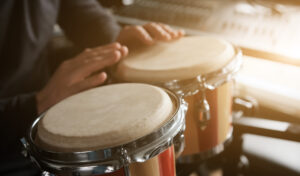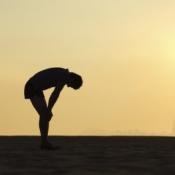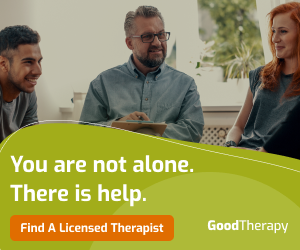 Nope, this isn’t a strange riddle where someone is found in the desert in a scuba suit. The answer to the question posed above is actually pretty simple: brain integration.
Nope, this isn’t a strange riddle where someone is found in the desert in a scuba suit. The answer to the question posed above is actually pretty simple: brain integration.
What is that? Excellent question; I am glad you asked. As you may know, we have two hemispheres of the brain. Neuroscience is a relatively young field, and we are continuing to learn more about the complexity of the brain and its function with time and as research evolves. We do know that there are different roles played by different sides and areas of the brain, and that integrating neural networks appears to be helpful in resolving traumatic memories.
The success of eye movement desensitization and reprocessing (EMDR) in treating trauma and mental health challenges teaches us that alternating right- and left-brain stimulation, via visual, auditory, or tactile experience, helps facilitate emotional processing. Through the simple act of holding something that buzzes between your right and left hand, or listening to something shifting from your right to left ear, a memory that was once charged with emotion can become less distressing. During the process, it is common for relevant associations to arise, for memories of thoughts and body sensations to arise. With support, this process can facilitate lasting and integrated healing.
Right-left brain stimulation may sound like a scary, science fiction-like process, but I assure you there is no electricity involved in this type of therapy. Your body receives input in the form of sound, touch, or sight, without any added energy.
Along with helping us process emotions, EMDR can help build up positive memories, experience, thoughts, and feelings. We call this resourcing, and use imagined or real resources to cultivate feelings of peace, nurturing, protection, and wisdom. In addition to and as part of processing negative experiences, it is crucial to cultivate the positive, sometimes the opposite of what occurred in the experience of trauma.
Think about your life for a moment and ask yourself: when do I engage in an activity that engages my right and left brain in alternating rhythm? How do I feel before, during, and after the fact? How can I incorporate this information into my healing path?
How do walking, running, and drumming factor in? Think about it for a moment. When you walk, run, or drum, you are using your body in a rhythmic way, alternating the stimulation or use of your right and left brain throughout the activity. Have you ever gone on a hike or run and felt that you were sorting through your thoughts, developing new insights, or becoming less distressed about something? We know that exercise has many benefits; EMDR highlights for us some of the mental and emotional benefits.
There are a million ways to alternate right- and left-brain activation, including dance, yoga, and some tai chi moves. People have naturally gravitated toward right-left movements in many healing rituals across the world. Think of how many sacred rituals involve drums, movement, or voyages on foot. Understanding brain integration, plasticity, and resilience gives us some insight into why these rituals have been effective and why they continue to be passed down through generations.
Think about your life for a moment and ask yourself: when do I engage in an activity that engages my right and left brain in alternating rhythm? How do I feel before, during, and after the fact? How can I incorporate this information into my healing path?
If you are looking to heal from specific traumatic memories, I highly recommend working with a skilled EMDR professional who can provide structure and guide you toward health and resolution. Consider how your own choices outside of therapy can support your process as well. Perhaps you will choose to walk or bike to your therapist’s office this week, or do a little dance after your session. Whatever you choose, may it serve your healing and integration.

The preceding article was solely written by the author named above. Any views and opinions expressed are not necessarily shared by GoodTherapy.org. Questions or concerns about the preceding article can be directed to the author or posted as a comment below.

 Trauma Treatment: What’s Your Body Got to Do with It?
Trauma Treatment: What’s Your Body Got to Do with It? Better After Trauma Than Before It? For Many, It's True
Better After Trauma Than Before It? For Many, It's True Stages of Trauma Recovery: What It Means to Be a 'Survivor'
Stages of Trauma Recovery: What It Means to Be a 'Survivor'


Please fill out all required fields to submit your message.
Invalid Email Address.
Please confirm that you are human.
Leave a Comment
By commenting you acknowledge acceptance of GoodTherapy.org's Terms and Conditions of Use.